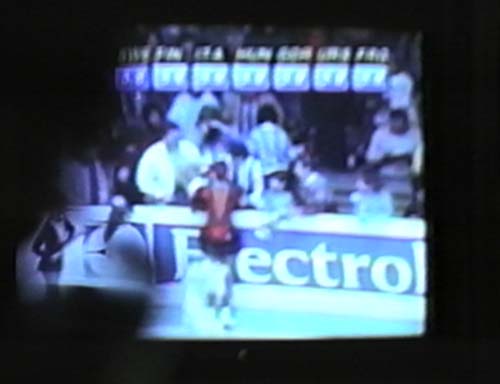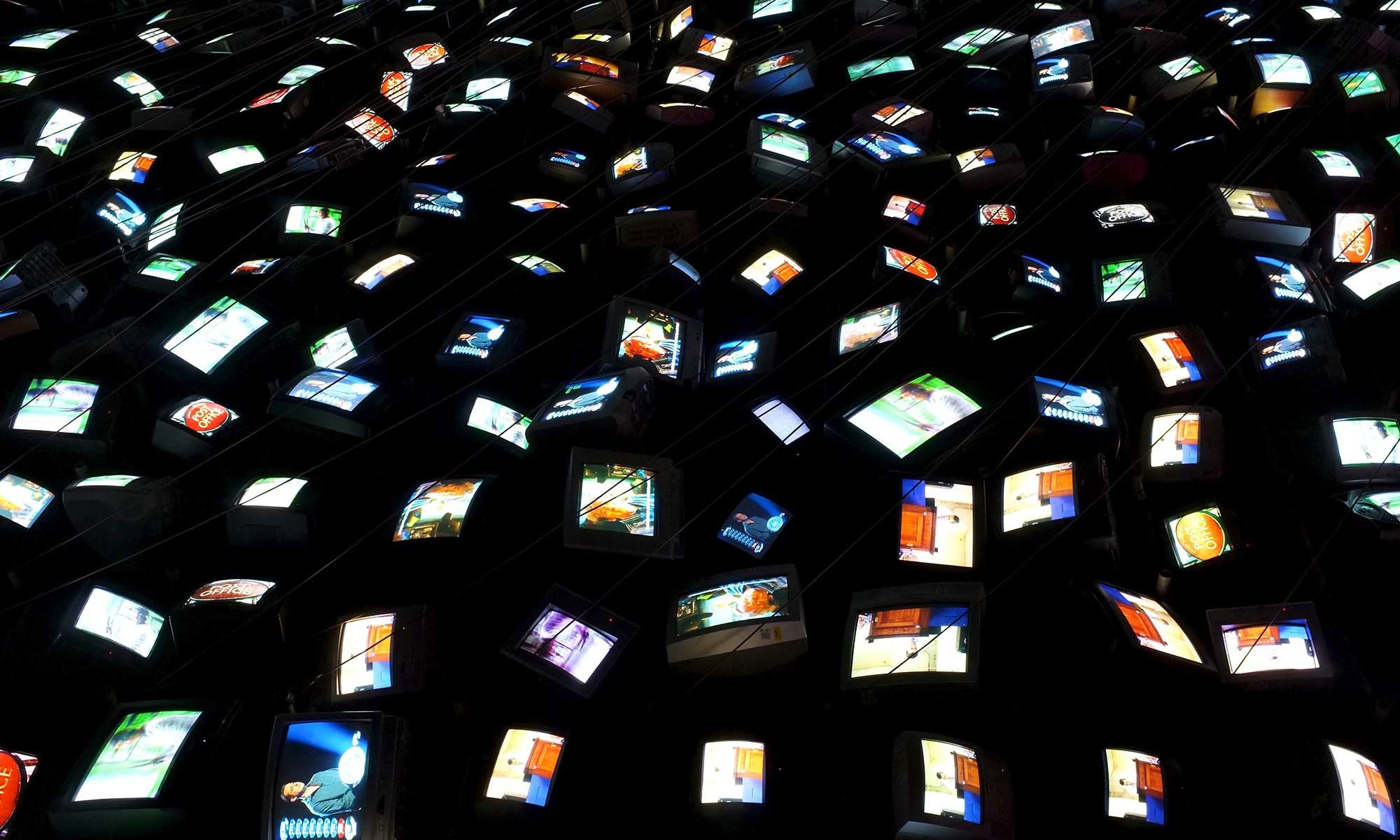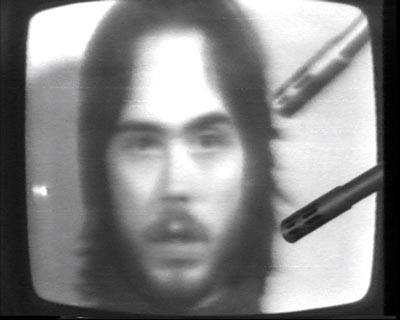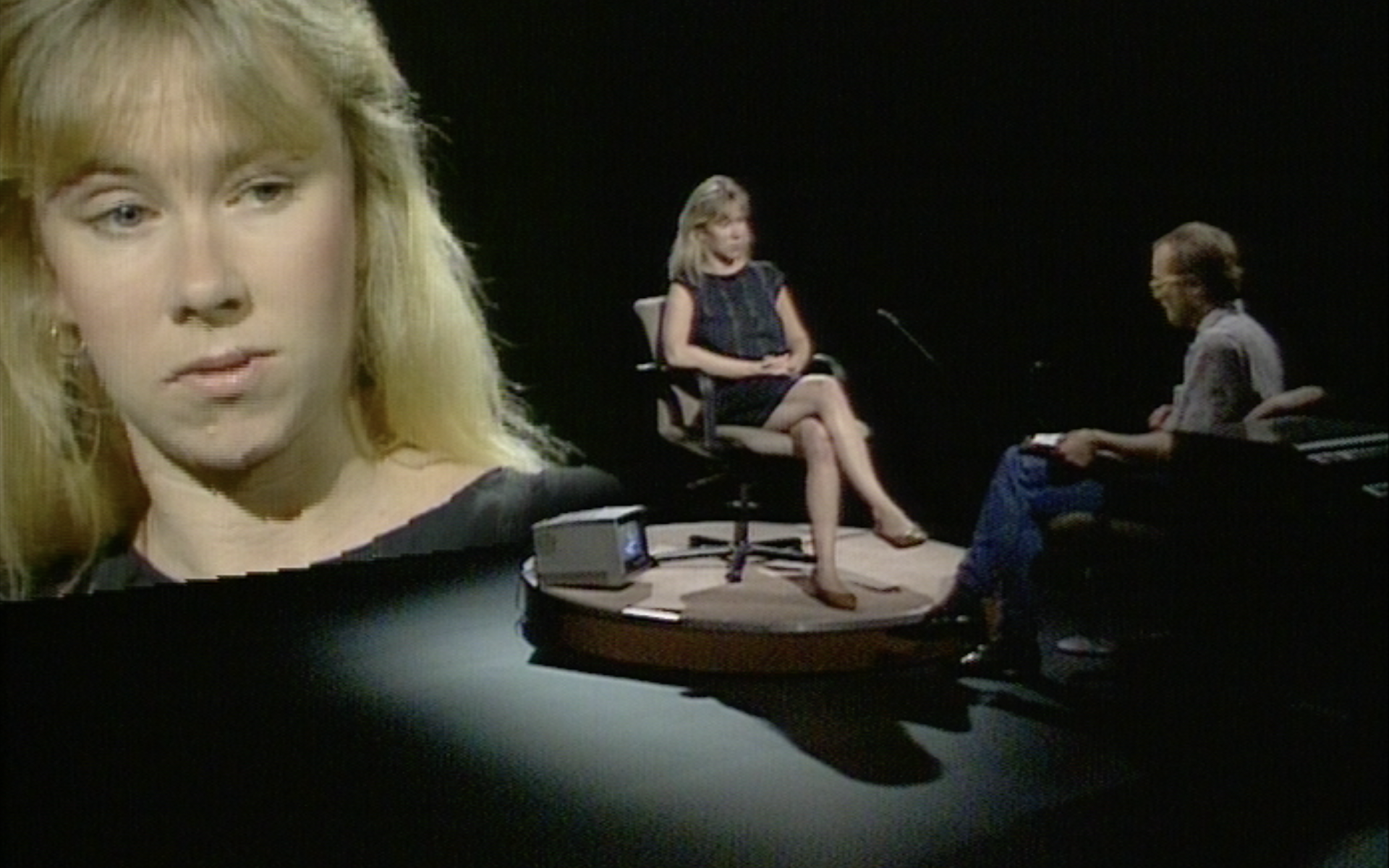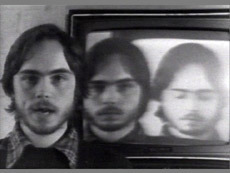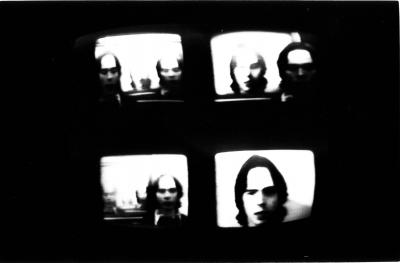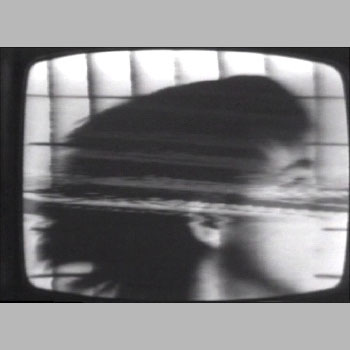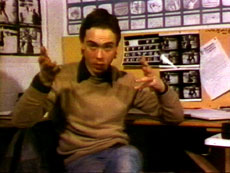‘An auto-focus-pulling play between a woman working at home sewing while watching an ice-skating diva on TV. Through the spectacles of the worker, the camera drifts in and out of focus between the two, leaving a viewer of the piece watching the watcher watching the watched.’ David Critchley …
Continue reading “Homework”
Further Known Screenings:
1978 London Video Arts
1978 Royal College of Art
1978 Lanchester Polytechnic, Coventry
1981 Chelsea School of Art …
Continue reading “Instruction Limitation”
‘Dialogue for Two Players is the final version of a series of works started in 1977 with DIALOGUE FOR FOUR PLAYERS-a four monitor work, commissioned by the AIR Gallery, London. The works centre around a behavioural manipulation of a number of people (in this case two) within an environment in which they seem to have much freedom and with which they have to come to terms. The freedom is however an illusion, they may make only limited ‘moves’ …
Continue reading “Dialogue for Two Players (1984)”
“With Trialogue I was beginning to want to work in a more controlled way, trying to use video across multiple monitors and multiple layers of recording to explore ideas that went beyond looking at the nature of the medium. This piece layers three parts of a single narrative across three monitors contained within a single tape. I think it was the first time I used words in a narrative sense in a video tape – …
Continue reading “Trialogue”
Further Known Screenings:
London Video Arts
Chelsea School of Art
Royal College of Art
Lanchester Polytechnic, Coventry
Kunst Akademie Dusseldorf
…
Continue reading “Memory 1 & 2”
“Static Acceleration was first made in a 17 minute version on a half-inch open reel edit deck. A relatively new medium for artists at that time, video was still in the process of being explored for its possibilities and limitations. This is one of a series of works I made in the 1970’s examining specific technical properties while also relating them to expressive or emotive content. While Static Acceleration has an emotive element that can only come from a viewer watching the tape, …
Continue reading “Static Acceleration”
By 1979 when Pieces I Never Did was made, colour cameras, U-matic cassettes and a wider range of colour monitors were available. Consequently I was able to visit many performance, film, video, installation and sculpture ideas in the work.
Still from Pieces I never did
Talking to camera, I described ideas that had never got beyond a note in a sketchbook. Paradoxically, I was able to resurrect on video these items of personal performance that had been edged out by the structuralism of early video art, …
Continue reading “Pieces I Never Did”
